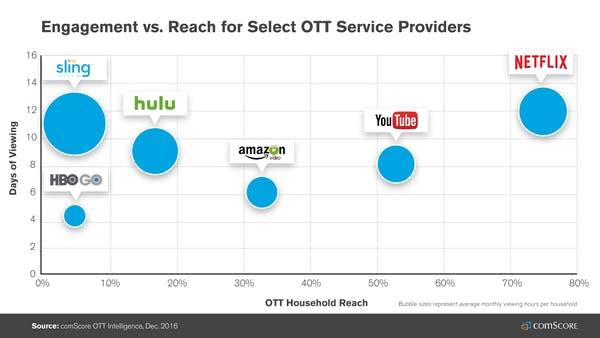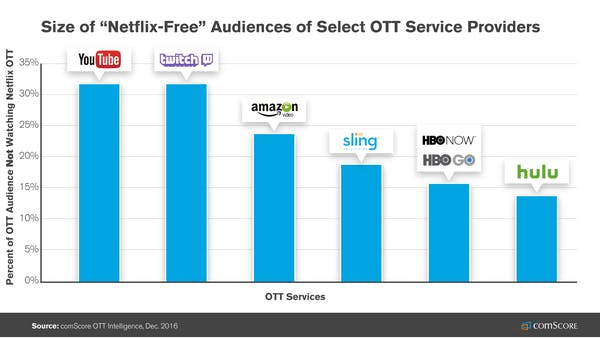BY MATT LOPEZ
ComScore recently released over-the-top content data (OTT) for December 2016, and as it turns out, ol’ king of the SVOD jungle Netflix is no longer the only predator on the landscape. Netflix did reach a whopping 75 percent of U.S. OTT households, the most out of any platform, but it did place second in one category — engagement. While Netflix still rakes in an impressive 28 hours of average viewing time per home, Sling TV, which offers a “skinny bundle” option that features content from multiple networks, leads on a “per household” basis with 47 viewing hours per month.

In addition to Sling TV’s newfound success, there are now 11 OTT services that reach one million or more homes in a given month, finally escaping Netlix’s shadow. Though progress is steady, there is still a long way to go before the gap between Netflix and other subscription video on-demand (SVOD) services is closed.
As of now Netflix is the top OTT service on every viewing platform from Roku to gaming consoles to Blu-ray disc players, with one exception: Fire TV. On the Fire TV stick/box, Amazon is first, followed by YouTube, leaving Netflix in third.

Regardless of the standings, one thing is clear: SVOD services are taking over and every company is trying to cash in. Whether it’s Google’s recently released YouTubeTV, or Hulu’s imminent TV service, it seems there’s no escaping the rise of SVOD.
However, for those who love traditional TV and are afraid that this new wave of media will destroy it, that might not be the case. According to a study conducted by the Pivotal Research Group, “despite the significant growth in access to SVOD services over the past few years, consumption of traditional TV programming has not been affected to the degree that many might expect.”
The study shows, that while homes with SVOD services are reducing consumption of non-internet-connected-device-based TV faster than homes without SVOD services, the drop is minimal.


